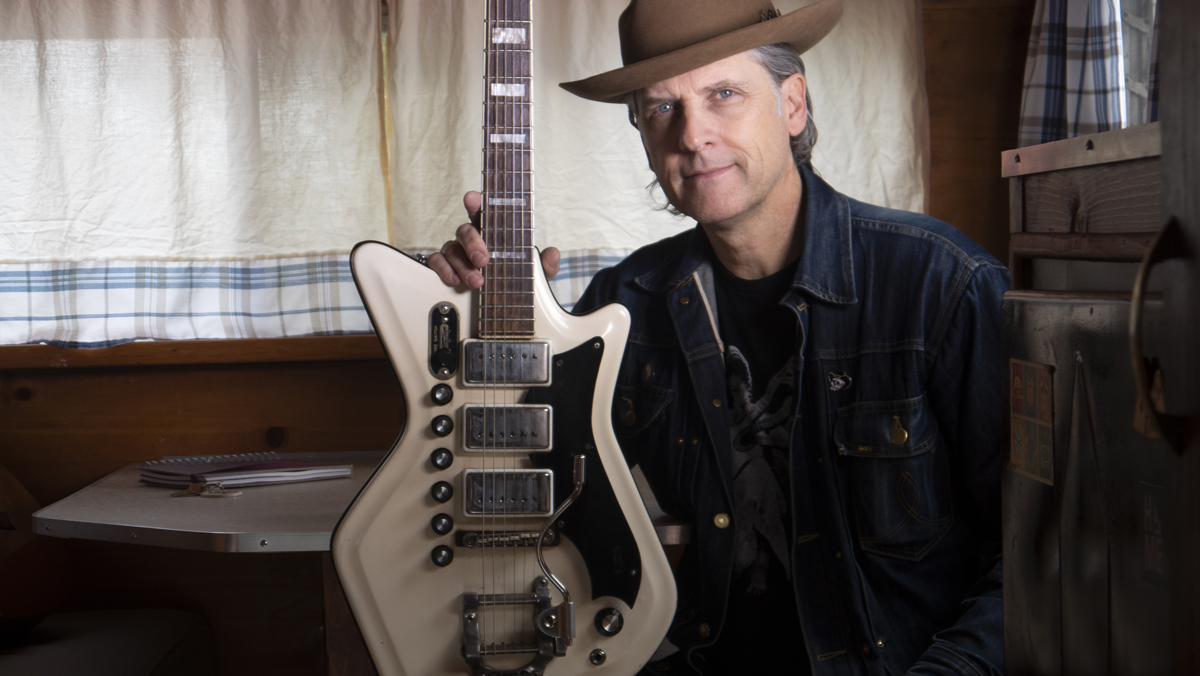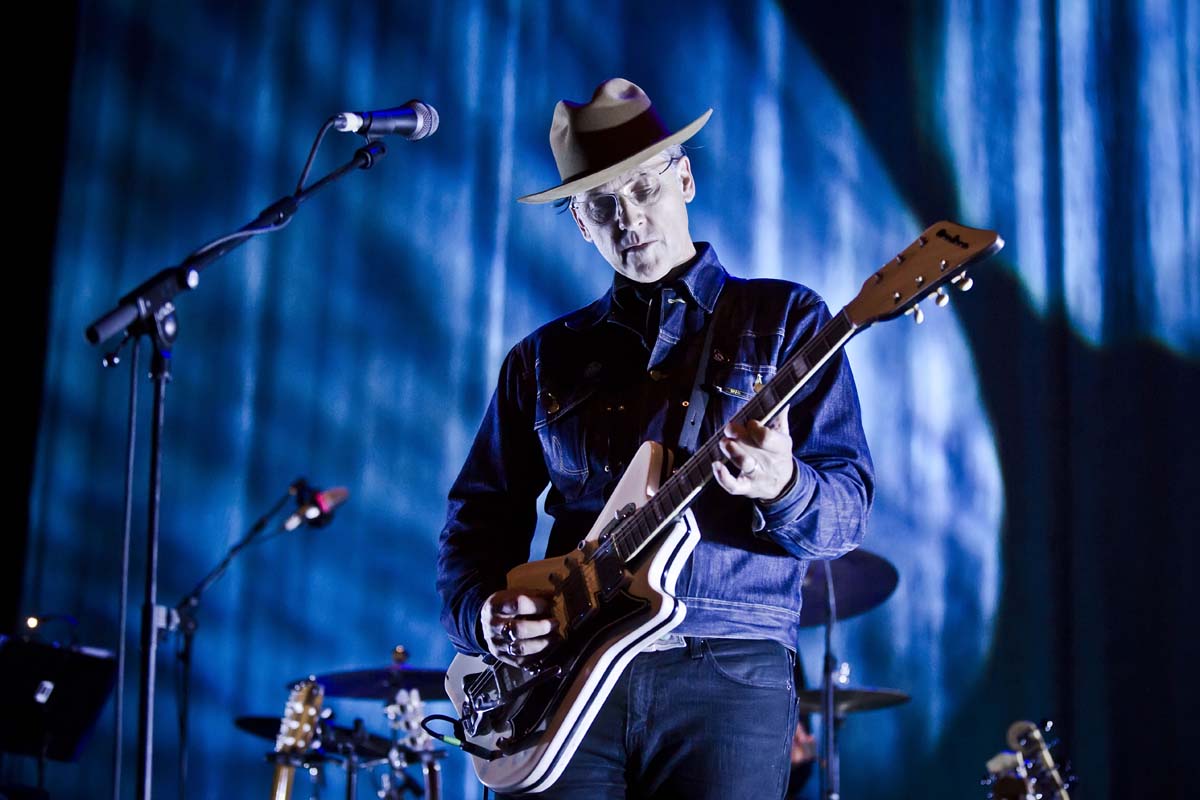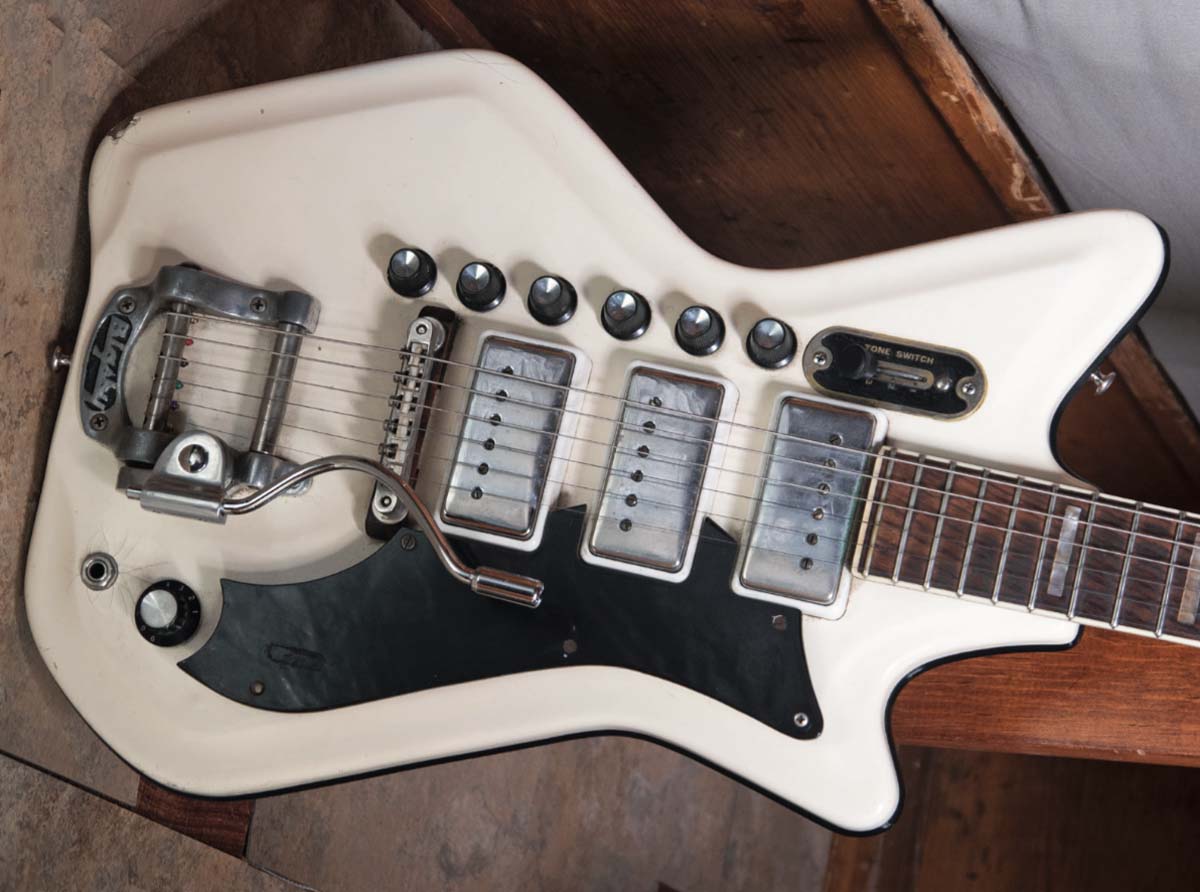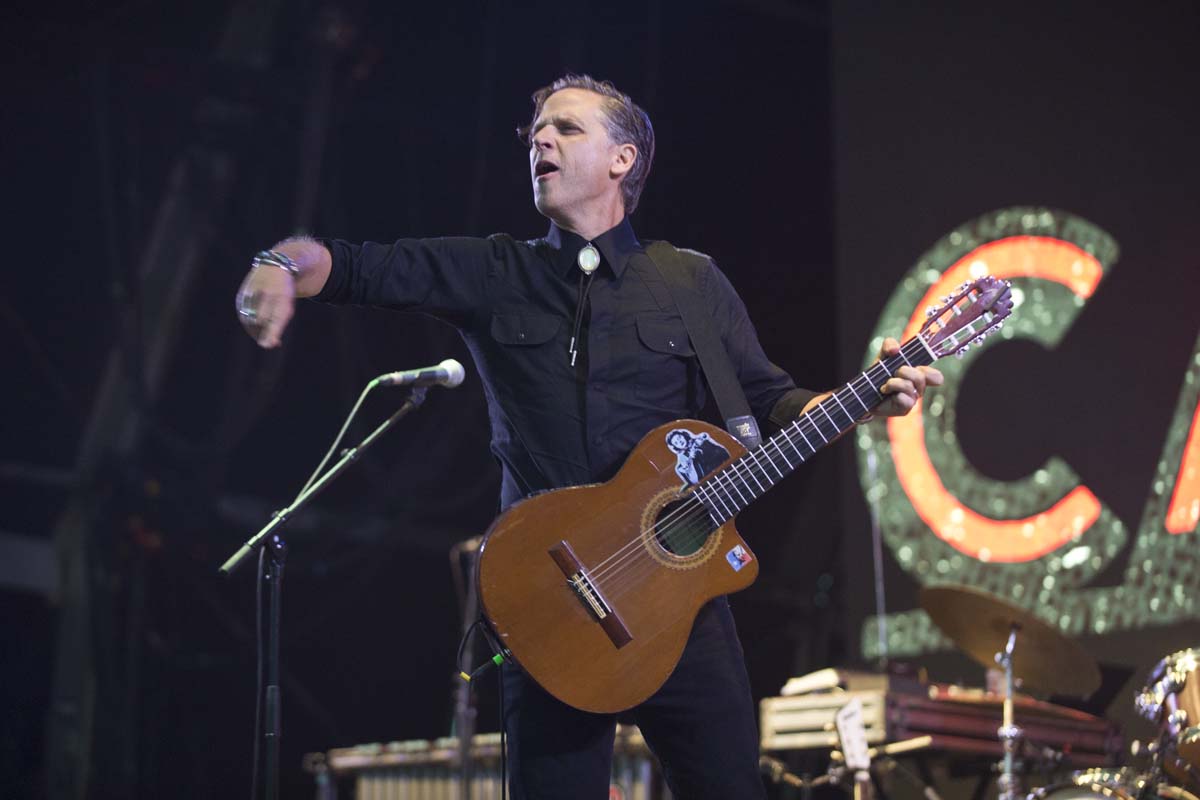Calexico’s Joey Burns: “Dynamic range is something I think about a lot as a guitar player. It can be really emotional“
From Bartók to bossa nova, Burns talks about the diverse styles that keep him interested and inspired

Change is in the air for Calexico’s guitar-slinging frontman Joey Burns. It’s a sentiment that is strongly echoed throughout the band’s most current LP, Seasonal Shift, as a new year – perhaps a new era – gets underway.
Having lived in the desert city of Tucson, Arizona, for well over a quarter of a century, Joey is now moving on to the decidedly greener pastures of Idaho’s capital, Boise. Yet Tucson is a locale that holds an epoch of memories for him.
Despite being a place of retirement for many, Joey and fellow Calexico co-founder John Convertino relocated there from Los Angeles in the mid-90s as their band’s globetrotting musical journey began to take off.
“Tucson is so unique,” begins Joey. “That’s where the band was formed originally. It’s one of those places where not only do people go to retire, but it’s like there’s an accumulation of things.
“People sell their things at swap meets and secondhand stores, and there’s also an Air Force base there with a massive collection of retired planes. We call it the ‘airplane graveyard’. And there’s another couple of privately owned airplane boneyards you can go and see. We shot a music video in one of them for a song called Two Silver Trees and it was a blast.”
It sounds like it could be perfect vintage-guitar shopping territory…
“There are certainly some great guitar stores in Tucson. Ever since vintage guitars became popular everyone’s looking for them, but you can still find stuff. There’s a friend of ours who’s a vintage guitar collector and they own a really cool shop called Rainbow Guitars.
Get The Pick Newsletter
All the latest guitar news, interviews, lessons, reviews, deals and more, direct to your inbox!
“There’s another place that was fantastic over the years called the Chicago Music Store. And there’s The Folk Shop. I remember getting a call from the owner there, Paul [Blumentritt], who has since retired. He called me one day and said, ‘Hey, I’ve got something for you.’
“He knew I liked nylon-string guitars and he had a Baldwin, but it was the Baldwin pickup I was really interested in. I told him, ‘Hey, I’d like to buy it. I’d like to gift it to Willie Nelson as a backup,’ because he uses the same kind of pickup. I’d just met him and thought it would be a cool gift.”
How did you meet Willie Nelson?
“We were asked to do a Bob Dylan song with him – Señor (Tales Of Yankee Power) – for the movie I’m Not There. The music supervisors said to us, ‘You’ve just done a song [Goin’ To Acapulco] with Jim James and My Morning Jacket – are you interested in doing more? How about a song with Willie Nelson?’ and I just about fell over.”
How did the recording go?
“It was pretty awesome. We were in Austin, Texas, doing some work at a show and we go to the studio and meet Mickey Raphael, the harmonica player, and I said, ‘Where’s Willie?’ Nobody knew where he was. Turns out he was sleeping in because he’d been playing poker all night in Dallas.
I love nylon-string guitars. I’m drawn to players like Willie Nelson. I first heard nylon-string guitar on The Beatles’ song And I Love Her. I mean, that got me
“He was just on his way down on his tour bus, which he basically used as his mobile home. He arrived and his crew got out his guitar, Trigger, and I got to try it. It’s beautiful. I loved it. I love nylon-string guitars. I’m drawn to players like Willie Nelson.
“I first heard nylon-string guitar on The Beatles’ song And I Love Her. I mean, that got me. I was like, ‘What is this melody? What is this rhythm? And what are those instruments?’ That really got my attention, even as a 10-year-old kid.”

What was your first instrument?
“Piano, then drums, then guitar. Then bass. I think that route turned me into a bass-y guitarist. That’s the best way I can put it. I’m pretty good with rhythms and I think that’s also why I gravitated towards Latin music; there’s just a lot more places to go with rhythms, whether you’re playing bass or strumming and playing rhythm guitar.
“I discovered that early on in jazz bands when we would play bossa nova or anything that was from Latin America. It was just so much more fun as a bass player. It swings in a different way. I mean, I love rock and folk and world music – I love it all. I think I’ve always been curious about different instruments.”
I’ve always been curious – or as some of my friends call me, a ‘frustrated musicologist’. Ultimately, that’s what led me to collaborating with people from all around the world
Was that something you explored in music school?
“In college, I bought a used sitar for one of my music theory classes and used it to write a fugue for sitar and a small string ensemble. All the string players were pissed off at me because it was in the key of F# minor, but the sitar was tuned in a certain way.
“It’s a labour of love. I’ve always been curious – or as some of my friends call me, a ‘frustrated musicologist’. Ultimately, that’s what led me to collaborating with people from all around the world.
“At the same time, I told my orchestra conductor, ‘I’m going to miss the dress rehearsal for this upcoming show because I’ve got tickets to see REM,’ and he goes, ‘Well, I’m just going to have to fail you then.’ I was like, ‘Okay’ [laughs]. I mean, I liked classical, but I think he and some of my other teachers knew that wasn’t the be-all-end-all for me.”
Who have you collaborated with recently?
“Our new record [Seasonal Shift] features a guitarist called Bombino from Niger and he’s an amazing guitar player. What strikes me the most is that even though he’s playing a Fender Strat, all his tone is in his fingers and his phrasing.
“The familiarity of some of the sounds is what catches a lot of Westerners’ ears, but the phrasing and the modes and scales are really different. It’s a new perspective and feeling. It’s really exciting.“
“I’ve done some really interesting collaborations over the years. Some of them have been recorded, but some of my favourite ones haven’t. And that’s okay, too. We were lucky enough to do a collaboration with a duo called Correo Aereo, which means ‘airmail’ in Spanish.
“They’re just one of countless incredible musicians out there that not many people know about. The guitar player, Abel [Rocha], is a great songwriter and taught me a lot, as did various members of Mariachi Luz de Luna.”

What did you learn from Mariachi Luz de Luna?
“These are guys I met in Tucson back in the 90s. We did quite a few tours in Europe together and it was incredible. We would play aftershow parties backstage or in a bar, or we would go to a plaza somewhere and just jam.
“From all that, I learned about different strumming techniques and different rhythm forms, thanks to Johnny Contreras mainly. He also teaches mariachi at Pueblo High School in Tucson. I was lucky enough for him to teach me some of his strumming studies. Like a lot of musicians, he’s really forthcoming and wants to teach you what he knows.”
How has that knowledge helped you creatively?
“Mariachi is tied to various types of music from around the world. It’s incredible the way it’s grown. There are so many different styles of rhythm and expression within the form, and because of those dynamics and instrumental passages and transitions there’s a big connection with soundtrack music.
In high school, I was in the jazz band playing bass and I ended up getting a degree in performance on the double bass
“I love soundtracks, and I love writing and performing for soundtracks. The instrumental aspects come naturally for us. We come from a pretty strong instrumental background and grew up loving classical music, jazz and rock music.
“In addition to drums, my partner in the band, John, also plays vibes, marimba, accordion and piano. In high school, I was in the jazz band playing bass and I ended up getting a degree in performance on the double bass – all the while driving around the south of Los Angeles playing everything from free jazz to folk to rock, you name it!”
John Convertino and yourself go back a long way…
“Before Calexico, we were in a band together called the Friends Of Dean Martin. We did a lot of lounge songs and instrumentals. We had to change the name to the Friends Of Dean Martinez because Dean Martin’s manager said, ‘You can use the name, but it’s going to cost you 30 per cent of your profits,’ which was a little too much!
“When we started Calexico, we’d already been playing a lot of instrumentals, so soundtracks were easy for us because instrumentals were always part of the vocabulary.”
In Breaking Bad they used a song of ours called Banderilla. It’s been really fun to see where the songs can go and how they can be used in movies like Dead Man’s Shoes
Have you worked on any soundtracks recently?
“Back in March [2020] some of the producers who worked on Breaking Bad came to us asking if we could write a 30-second main title theme for a new project they were working on called Coyote, starring Michael Chiklis. That was the first thing we did during [the] Covid-19 [pandemic] – work on this main title theme. In Breaking Bad they used a song of ours called Banderilla. It’s been really fun to see where the songs can go and how they can be used in movies like Dead Man’s Shoes.”

Do you think Morricone was inspired by mariachi?
“For sure. When you hear some of those trumpet passages, especially in the spaghetti western soundtracks, I feel like he’s picking up on that. It’s not a far leap. I have so much respect for him because he wasn’t just one thing.
“Some of those western soundtracks are so completely inventive, and at times comical and haunting. I mean, it plays on a lot of different emotions. He had so much room to explore and experiment, including those long, uncomfortable pauses, and that really saved movies.”
I remember when I was in the symphony orchestra the conductor said to us, ‘How are we going to get louder on this next piece?’ His answer was really simple: start quieter
Musical dynamics can be powerful…
“Dynamic range is a really beautiful thing. It can be really emotional, right? And certain people get that. I remember when I was in the symphony orchestra the conductor said to us, ‘How are we going to get louder on this next piece?’ and everyone was just like, ‘Do I dig into my instrument more?’ His answer was really simple: start quieter. It’s fascinating. Dynamic range is something I think about a lot as a guitar player.”
Do you think modern PA systems have changed the way people experience the dynamics of live music?
“When I saw The Jon Spencer Blues Explosion play this club called Jabberjaw in LA in the 90s, the only thing going through the PA was the vocal, and I imagine that’s how things felt in the late 60s when rock was starting to blossom. Imagine a venue like the Roundhouse doing a show now with a period-style PA, instrumentation and amplification on stage. Imagine what that would be like!
“Have you ever seen Jonathan Richman play live? You have to check him out. He makes sure that the volume isn’t too loud, and for many years he brought his own PA system on tour. I thought that was really great. But the point is: sometimes it’s not that the PA has to be louder, it’s that the audience and the musicians have to be quieter.”
When I saw The Jon Spencer Blues Explosion play this club called Jabberjaw in LA in the 90s, the only thing going through the PA was the vocal, and I imagine that’s how things felt in the late 60s when rock was starting to blossom
Who is your favourite rock guitarist?
“Jimmy Page is definitely my favourite of the rock guitarists, particularly because of his melodic sense. His guitar playing, songwriting and arrangements went outside of being a rock band. It went into a transitional experience. I was thinking about Bartók recently and how he kind of went back to folk music.
A lot of classical composers have gone to folk music to find inspiration. If you get too caught up in what you’re doing and what you really like and love, at a certain point you might go on a quest to uncover something and get a new perspective. I think that’s a natural thing. It’s what keeps me engaged and excited.”
- Calexico’s latest album, Seasonal Shift, is available now on City Slang.
Rod Brakes is a music journalist with an expertise in guitars. Having spent many years at the coalface as a guitar dealer and tech, Rod's more recent work as a writer covering artists, industry pros and gear includes contributions for leading publications and websites such as Guitarist, Total Guitar, Guitar World, Guitar Player and MusicRadar in addition to specialist music books, blogs and social media. He is also a lifelong musician.
“It was tour, tour, tour. I had this moment where I was like, ‘What do I even want out of music?’”: Yvette Young’s fretboard wizardry was a wake-up call for modern guitar playing – but with her latest pivot, she’s making music to help emo kids go to sleep
“There are people who think it makes a big difference to the sound. Stevie always sounded the same whether it was rosewood or maple”: Jimmie Vaughan says your fretboard choice doesn’t matter – and SRV is his proof








![John Mayer and Bob Weir [left] of Dead & Company photographed against a grey background. Mayer wears a blue overshirt and has his signature Silver Sky on his shoulder. Weir wears grey and a bolo tie.](https://cdn.mos.cms.futurecdn.net/C6niSAybzVCHoYcpJ8ZZgE.jpg)

![A black-and-white action shot of Sergeant Thunderhoof perform live: [from left] Mark Sayer, Dan Flitcroft, Jim Camp and Josh Gallop](https://cdn.mos.cms.futurecdn.net/am3UhJbsxAE239XRRZ8zC8.jpg)
